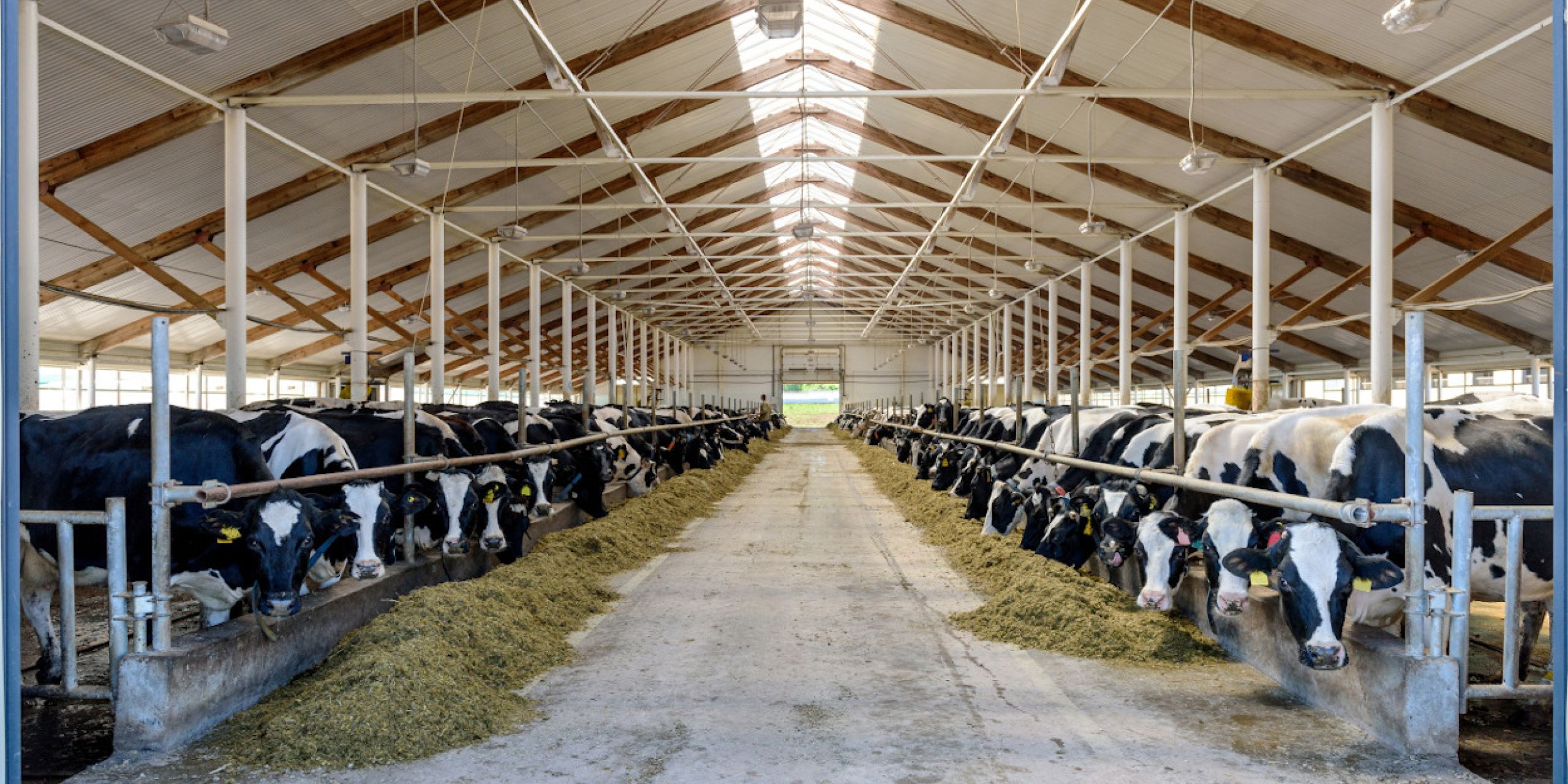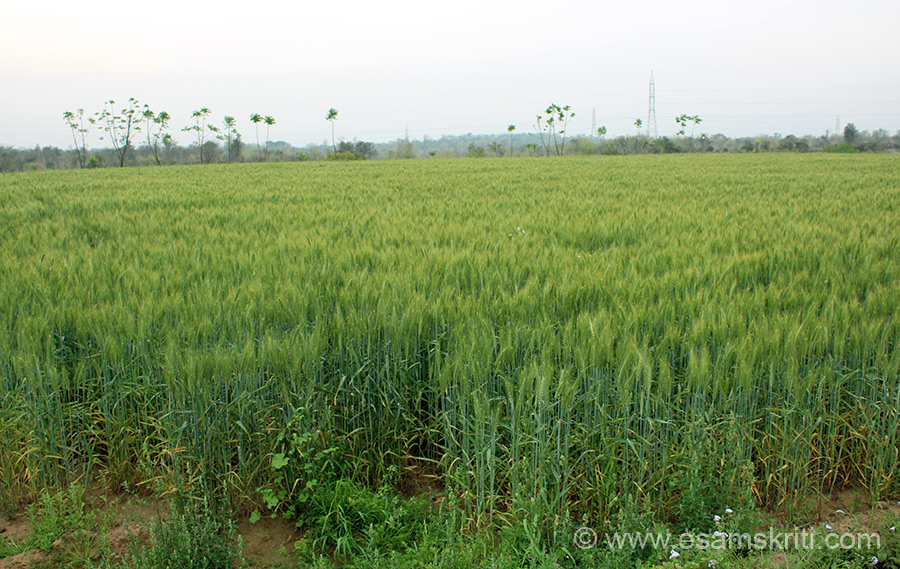Improving Livestock Feed Quality for Punjab Farms

Introduction:

The livestock industry in Punjab plays a crucial role in the state’s economy. Enhancements in livestock feed quality are essential to promote animal productivity, reduce feed costs, and ensure the overall health of the livestock population.

Challenges Faced:
- Low availability of quality feed ingredients
- Seasonal fluctuations in feed availability
- Imbalanced nutrient composition of available feedstuffs
- Presence of anti-nutritional factors and mycotoxins
Strategies for Improvement:
1. Promoting Forage Production:
- Encourage farmers to adopt improved varieties of fodder crops with high nutritional value.
- Implement innovative forage production techniques, such as intercropping and rotational grazing.
- Utilize marginal lands for forage cultivation.
2. Developing Feed Supplement Industries:
- Support the establishment of feed mills and concentrate manufacturing units.
- Promote the production and supply of balanced feed supplements tailored to different livestock needs.
3. Enhancing Feedstuff Quality:
- Implement quality control measures at feed production facilities.
- Encourage the use of feed additives to enhance digestibility and reduce mycotoxin contamination.
- Promote the utilization of by-products and unconventional feedstuffs, such as crop residues and distillers’ grains.
4. Capacity Building and Extension Services:
- Conduct training programs for farmers and feed manufacturers on feed quality management.
- Provide technical assistance and guidance on feed formulation and ration balancing.
- Promote awareness about the importance of feed quality for livestock health and productivity.
5. Research and Development:
- Invest in research to identify new and improved feed ingredients.
- Develop technologies for feed processing and preservation.
- Evaluate the efficacy of feed additives and anti-nutritional factor mitigation strategies.
Benefits of Improved Feed Quality:
- Increased animal productivity and growth rates
- Reduced feed costs
- Improved feed conversion efficiency
- Enhanced animal health and welfare
- Reduced environmental impact by reducing nutrient excretion
Conclusion:
By implementing these strategies, we can significantly improve the quality of livestock feed in Punjab farms, leading to increased profitability for farmers, improved animal health, and a more sustainable livestock production system. Collaboration between farmers, feed manufacturers, researchers, and extension services is essential for the successful implementation of these initiatives.## Improving Livestock Feed Quality For Punjab Farms,
Executive Summary
The quality of livestock feed is a critical factor in ensuring the health, productivity, and profitability of livestock farms. In Punjab, many farmers face challenges in providing their animals with high-quality feed due to limited access to nutritious feedstuffs. This article will explore key strategies for improving livestock feed quality in Punjab, including: optimizing feed formulations, ensuring feed safety, improving feed storage and handling, and implementing quality control measures. By adopting these strategies, farmers can enhance the health and productivity of their livestock, leading to increased profitability.
Introduction
Livestock farming is a vital part of Punjab’s agricultural economy, providing nutritious food, income, and employment opportunities for farmers and rural communities. However, livestock productivity in Punjab is often constrained by poor feed quality. Factors such as seasonal variations, limited access to high-quality feedstuffs, and unscientific feed management practices contribute to nutritional deficiencies and health problems in livestock. Improving feed quality is essential for addressing these challenges and boosting livestock productivity.
FAQs
1. Why is feed quality important for livestock?
Answer: Feed quality directly impacts livestock health, growth, reproduction, and production efficiency. High-quality feed provides essential nutrients for optimal growth, immune function, and disease resistance.
2. What are the common challenges in ensuring feed quality in Punjab?
Answer: Punjab farmers face challenges such as limited availability of quality feedstuffs, seasonal variations, lack of feed storage facilities, and unscientific feed management practices.
3. How can farmers improve feed quality on their farms?
Answer: Farmers can improve feed quality by optimizing feed formulations, ensuring feed safety, improving feed storage and handling, and implementing quality control measures.
Key Subtopics for Improving Livestock Feed Quality
Feed Formulation Optimization
Description:
Feed formulation involves determining the optimal ratio of ingredients to meet the nutritional requirements of livestock. Proper formulation ensures that animals receive a balanced diet with adequate levels of energy, protein, minerals, and vitamins.
Important Considerations:
- Animal species and age: Different species and age groups have varying nutritional needs.
- Feedstuff availability and cost: Farmers should consider the availability and cost of feedstuffs in their region.
- Nutrient requirements: Feed formulations must meet the specific nutrient requirements of the animals to optimize growth, productivity, and health.
- Feed intake and digestibility: Formulations should consider the feed intake and digestibility of different feedstuffs.
- Anti-nutritional factors: Some feedstuffs may contain anti-nutritional factors that can interfere with nutrient absorption.
Feed Safety Assurance
Description:
Feed safety is critical for livestock health and food safety. Contaminated or adulterated feed can cause illness, mortality, and economic losses. Maintaining feed safety involves preventing and controlling the presence of harmful substances in feed.
Important Considerations:
- Feedstuff sourcing: Farmers should source feedstuffs from reputable suppliers who follow good agricultural practices.
- Storage conditions: Feed should be stored in clean, dry, and pest-free conditions to prevent contamination.
- Feed handling practices: Proper feed handling practices, such as using clean equipment and avoiding cross-contamination, are essential.
- Monitoring and testing: Regular monitoring and testing of feed can help detect and prevent contamination.
- Record-keeping: Maintaining detailed records of feed来源来源 and handling practices is important for traceability in case of contamination incidents.
Feed Storage and Handling Improvement
Description:
Proper feed storage and handling are crucial for maintaining feed quality and preventing wastage. Inadequate storage and handling can lead to deterioration, contamination, and loss of nutritional value.
Important Considerations:
- Storage facilities: Farmers should invest in appropriate storage facilities to protect feed from moisture, heat, and pests.
- Temperature and humidity control: Feed should be stored in controlled temperature and humidity conditions to minimize spoilage.
- Pest control: Regular pest control measures are necessary to prevent contamination and damage to feed.
- FIFO (First-In-First-Out) principle: Feed should be used on a first-in-first-out basis to prevent the accumulation of old feed.
- Feed handling equipment: Proper feed handling equipment can minimize wastage and reduce labor requirements.
Feed Quality Control Implementation
Description:
Quality control measures are essential for ensuring the consistency and quality of livestock feed. Regular monitoring and testing of feeds can help identify and address any deficiencies or contaminants.
Important Considerations:
- Sampling procedures: Representative samples of feed should be collected using established sampling procedures.
- Laboratory analysis: Feed samples should be analyzed by accredited laboratories to determine their nutritional content and safety.
- Record-keeping: Detailed records of feed analysis results should be maintained for future reference and traceability.
- Corrective actions: Based on analysis results, corrective actions should be implemented to improve feed quality and address any deficiencies.
- Continuous improvement: Quality control should be an ongoing process to continuously improve and maintain feed quality.
Conclusion
Improving livestock feed quality is a multifaceted approach that requires attention to feed formulation, safety assurance, storage and handling, and quality control. By implementing the strategies discussed in this article, Punjab farmers can enhance the health, productivity, and profitability of their livestock operations. Improved feed quality leads to increased milk production, weight gain, and reproductive performance, ultimately boosting farm income and contributing to the overall economic development of Punjab.
Relevant Keyword Tags
- Livestock feed quality
- Punjab farms
- Feed formulation optimization
- Feed safety assurance
- Feed storage and handling improvement